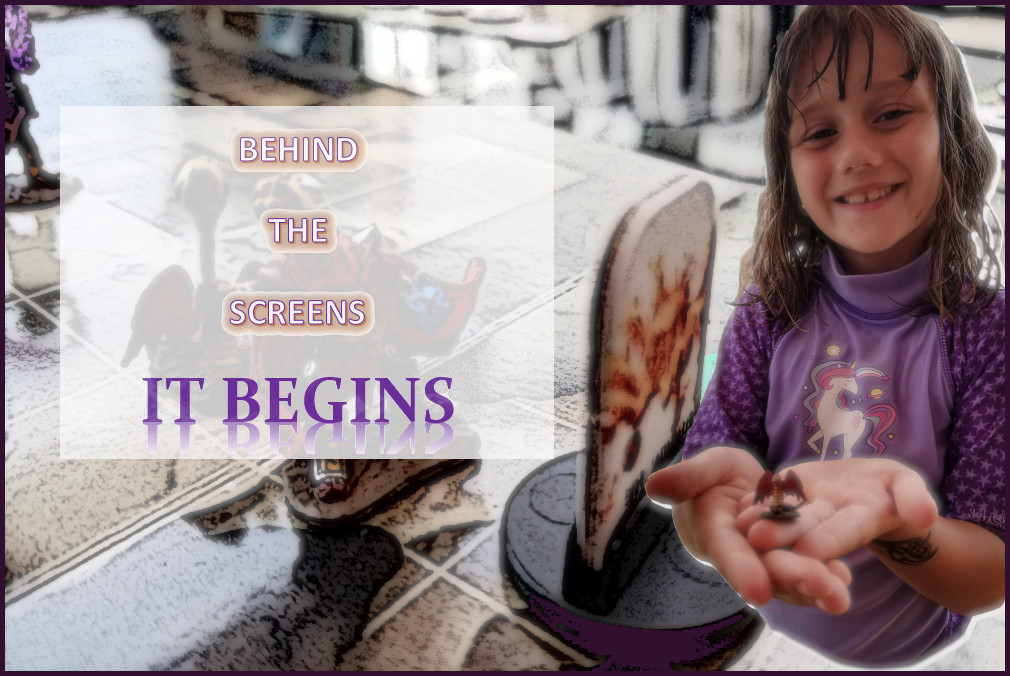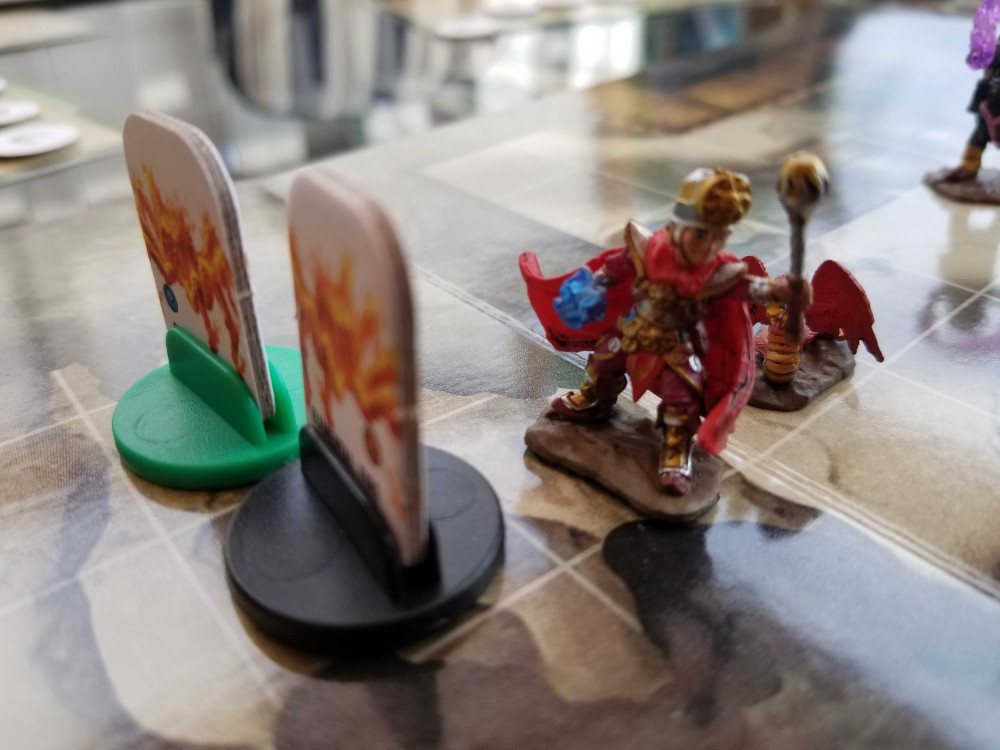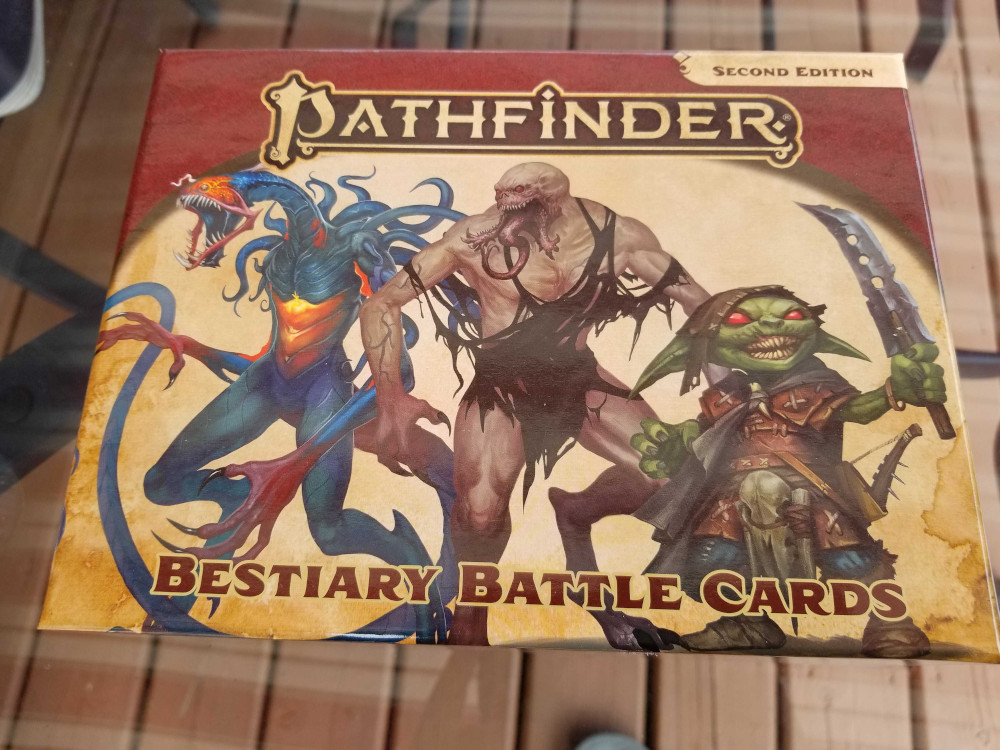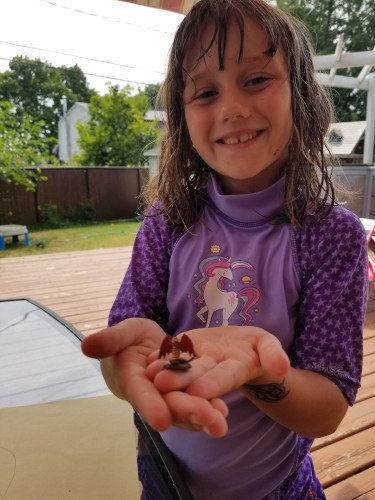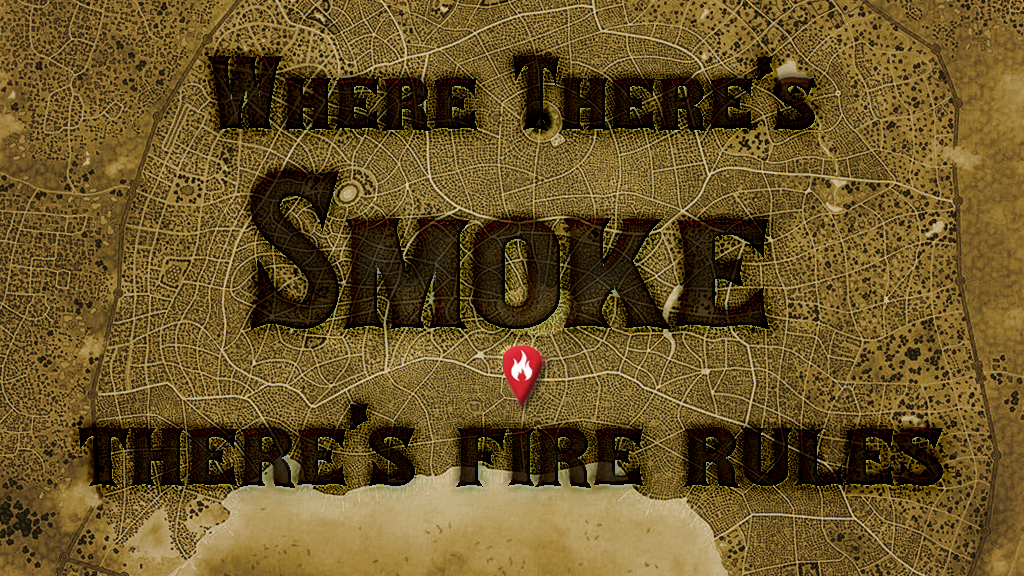Carrying on the traditions of parents sharing their hobbies with their children, and family members introducing the next generation to RPGs, this summer, my older daughter, Scarlett, and I player her first sessions of Pathfinder.
Scarlett, now 6, always had an incredible imagination, but she balked at structured games. She couldn’t handle Snakes & Ladders, with all its precise counting, waiting her turn, and the spaces being ordered in a way that she didn’t agree with. She did love game components. For years, we played Zombie Tower 3D, stripped of the rules. Effectively, we turned the game into a cooperative imagination story, so close to the tabletop RPG experience. I worried that taking that and adding rules might spoil what fun she found in games. However, after playing through an entire My Little Scythe game (and her even asking to paint the unpainted miniatures in the game), I felt like we could take the next step.
The Beginner Box
I’ve talked a lot about making plans for Scarlett’s first RPG experience over the last year. Maybe longer. I even bought 9th Level Games’ Excellent Princess RPG, The Excellents, thinking that would be the game I used to introduce her to RPGs. However, I ended up using my Pathfinder 2e Beginner Box to play Pathfinder 2e with her.
Why The Beginner Box?
To Scarlett, games come in a box. They have tangible components, a board, and cards. Of course, I could have gathered all of that and presented her The Excellents as my own RPG boxed set. But The Beginner Box already contains all of the components I would need to track down. Plus, it’s a game I already know well. While the topic of The Excellents seemed like the best choice when Scarlett and I finished Netflix’s She-Ra series, a year of shows like Trollhunters, Dragon Prince and the How To Train Your Dragon series moved the needly of her interests towards a Pathfinder setting.
Preparation
Despite writing the Know Direction Network’s GM advice blog, unless I’m mistaken, I hadn’t GMed since 2019’s Mimips 11. And my last in-person game? My fellow GMs, I couldn’t even tell you. So I literally dusted off my GMing supplies for this game, which included:
- The Beginner Box: The adventure, and all of the accessories I need to run it;
- Pathfinder Dice Tray: Giving a novice dice roller a target for her rolls saves time chasing dice that roll off the table, and lets me dictate where the dice end up so I can see her results;
- My dice: For my rolls;
- Tube of 7 gaming dice sets in all of the colours of the rainbow: For Scarlett’s rolls;
- WizKid’s Wardlings miniatures: For Scarlett’s character(s);
- Bestiary Battle Cards: To quickly reference the monster stats;
- NPC Codex Pawn Box: For NPC standees, and if Scarlett would rather play an adult PC;
- Starfinder Alien Archive Pawn Box.
Starfinder Alien Archive Pawn Box?
The first encounter in the Bestiary Box adventure pits the PCs against giant rats in the basement. On the one hand, a classic. On the other hand, a cliché. Furthermore, Scarlett is extremely empathetic to living creatures, even rats and bugs. Introducing RPGs to her by asking her to kill a bunch of animals risked alienating her. Plus, again, she’s used to stuff like Trollhunters. Telling her we’re playing a game that brings her into a fantasy world and lets her imagination run wild, then showing her rats? It’s practically false advertising.
So I thought the Starfinder Alien Archive Pawn Box would provide a fun skin substitute for the rat stats. I found some flaming spiders which worked perfectly. Now instead of a cautious shop keeper asking the PCs to investigate strangeness in her cellar, a panicked shop keeper ran out to the street to find anyone to help with her spontaneous basement fire, only for the PCs to get more than they expected.
Pathfinder with Scarlett
Although the game had its ups, downs, and :Os, overall the game went well.
Successes
The ups.
Fun!
The biggest success was the fun we had along the way. She was engaged, followed the action, and thought like characters in the situations I described. For example, when she encountered the fire spiders, she asked to use cold against them. The pregenerated wizard can cast cone of cold. I explained that using the spell used it up, which took some reminding for it to sink it, but at least she got the gist and didn’t argue against the idea.
Sometimes she overstepped and tried to dictate how NPCs reacted to her actions. Some GMs might suggest giving over narrative control. I didn’t. Because Scarlett struggled with structure in other games, I used this opportunity to set boundaries and reinforce what she controlled, and what she needed to react to.
She took the structure well, and even laughing explained how excited she was.
Teachable Moments
In addition to teaching structure, we practiced Scarlett’s math and other practical skills. I kept the PC stat blocks on my side of the table, but she had the dice. When she had an idea, I told her the bonuses tied to the rules, the effects of success, and contextualized the likelihood she succeeded. For example, if she attempted an action the character excelled at (like being acrobatic with her rogue), I told her her bonus, then said “that’s really good. You don’t even have to roll very high, because you’re so good at this”.
I tried to use context to inform her choices. Like when her fighter got hurt and she wanted to attack on her cleric’s turn. “Sure, you can do that. You will need to roll high, though. Your cleric is OK with a weapon, but better at helpful spells, like healing.” If she didn’t take my suggestion, I dropped it and let her go with her idea. After all, we roll dice because the game has odds, not absolutes. If she expressed concern, I reminded her of the previous decision that got her there. Like if she was nervous her injured character was in trouble, I reminded her that she had the option to heal, maybe consider it next turn. But, again, as long as she understood what her options were, I let her dictate her actions, and her dice dictate her successes.
Miniature Options
Letting Scarlett choose between a variety of miniatures was the right call. It solidified up front that her choices mattered, and the game reflected her choices.
She went with the Wardlings, casting Boy Cleric as the cleric (using the Kyra pregen, named Justin), and Winged Snake as the fighter (using the Valeros pregen, renamed Shatter Master). Finally, she asked if she could use a Light Fury toy too. I said yes, a gestalt of the rogue and wizard (using the better of the Merisiel and Ezren’s stats, and named Moon Gem).
Struggles
The downs.
Unexpected Triggers
I changed the adventure to suit her personality. I also changed my descriptions to be more encouraging and less visceral. All of that I expected.
I completely neglected to consider how horrifying the Sin Spawn looks.
Without thinking, I brought my supplies to the table. Scarlett almost reneged on playing with me when she saw the cover of the Bestiary Battle Cards. She may be used to more fantastic monsters than giant rats, but she’s not desensitized to horror. I put the Bestiary Battle Cards away and carefully examined the art she’d be exposed to before returning to run the game.
Scheduling
You know how I know I gave Scarlett the full RPG experience? We had trouble scheduling future sessions.
The problem, unfortunately is my 4 year old, Abigail. The more fun Scarlett and I had playing the game, the more Abigail wanted in. And giving her an assistant GM job didn’t work. She wanted to do what Scarlett and I were doing, and didn’t understand how her interpretation of what we were doing wasn’t what we were doing, or fun for us.
Which breaks my heart. Adapting the game to Abigail denies Scarlett the experience she enjoyed. Giving Scarlett the experience she enjoyed means hiding from Abigail, because simply asking her not to participate doesn’t work. The ideal situation would be me playing with Scarlett, and Tina playing with Abigail, but in the rare instances where Tina and I are both free, we plan family activities. Abigail does enough self-directed play when Tina and I are adulting. She takes it personality if we ask her to entertain herself while her sister gets time with one of her parents.
Honestly, the root of this “issue” is that we’re a close family who enjoys doing activities together. Obviously I’m happy with that , even if it comes at the expense of getting to share a passion of mine with the one of my two daughters old enough to participate and appreciate it.
Why Did I Run A Printed Adventure?
“Daddy, stop looking at the book. It’s more fun when you use your imagination.”
Actual quote.
Which, again, is not a universal truth. Many GMs bring a published adventure to live. I am not one of those GMs. In order of fun experiences for me and my players, it goes: fully improvised adventure based on thoughts I’ve had > running a short published adventure I’m familiar with > running a short published adventure I’m not familiar with > running a long published adventure, regardless of familiarity.
I’m very aware of my shortcomings GMing published content. It was still funny to hear it from the mouth of babes.
Surprises
The :O s.
Dice
I bought that rainbow tube of dice at Gen Con 2018, hoping one day to give it to my daughters. Abigail has played with them a few times over the years, having fun rolling them through a dice tower. But when it came to roleplaying with them, we quickly started using the Beginner Box dice instead. Colour-coding the dice to the character sheets, and identifying the dice by colour, ended up being a huge boon for Scarlett, who’s number and letter recognition skills are still emergent.
Play Continues
Perram often says that playing an RPG doesn’t start when you sit at the table, it starts when you’re reading the rulebook. By that same token, the game doesn’t end just because we’re not at the table. After the session, Scarlett asked to play with the Boy Cleric and Winged Snake miniatures. They and her Light Fury toy went on adventures as Justin, Shatter Master, and Moon Gem. It was like the session was watching an episode of a cartoon, and between sessions was playing with the show’s action figures.
Seeing Scarlett hatch a new way to play with her imagination was the most rewarding takeaway from the entire experience.
Overall
It was great GMing for the first time in forever, and even better seeing Scarlett drawn into the game. We’ve played four sessions so far. I’d like to introduce her to Essence20 soon, and have her see G.I. JOE through my eyes.
Once we figure out how Abby can participate in a way that’s fun for everyone, I think we’ll have our new favourite family pastime.
Every two weeks, Ryan Costello uses his experience as a Game Master, infused with popular culture references, to share his thoughts on best GMing practices to help his fellow GMs. Often deconstructing conventional wisdom and oft repeated GMing advice, he reminds his fellow GMs that different players play the game in different ways, and for different reasons.

